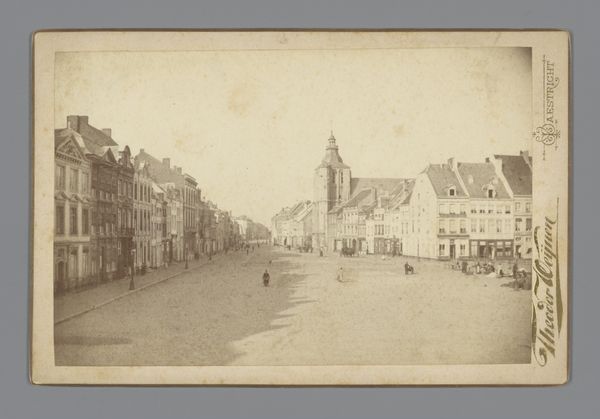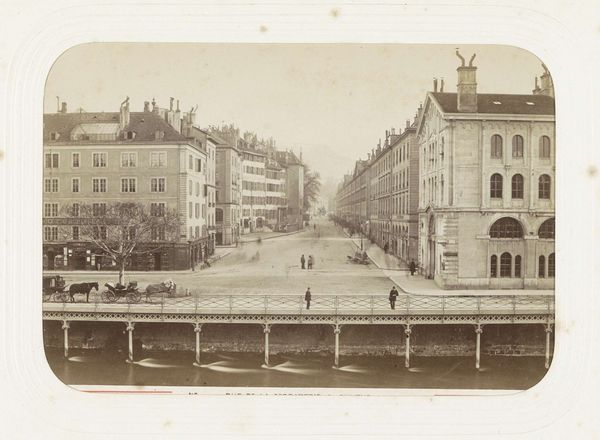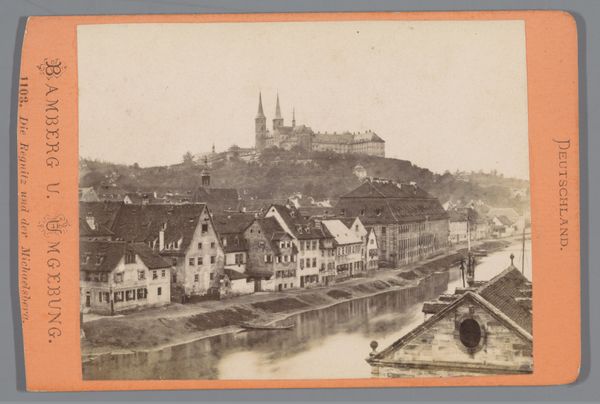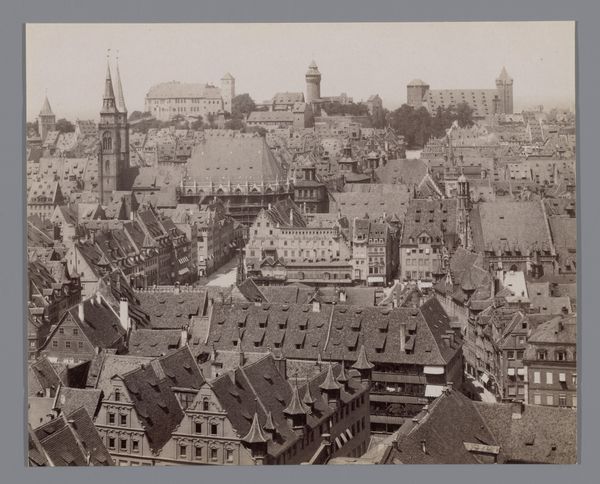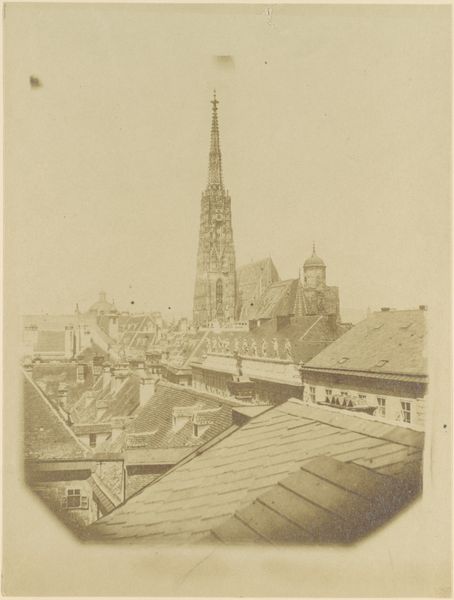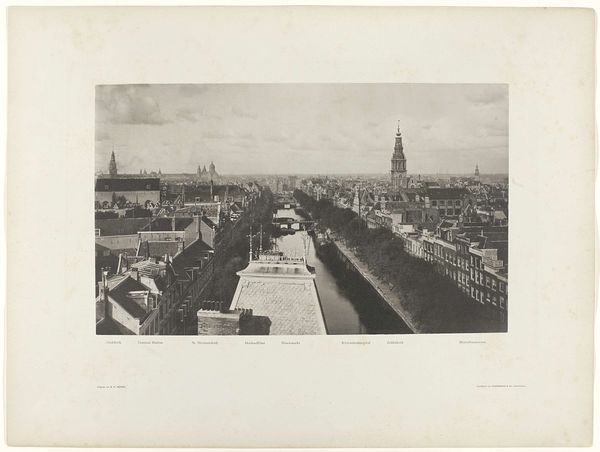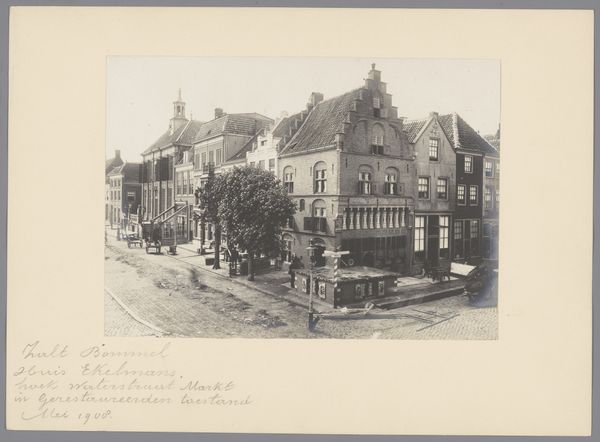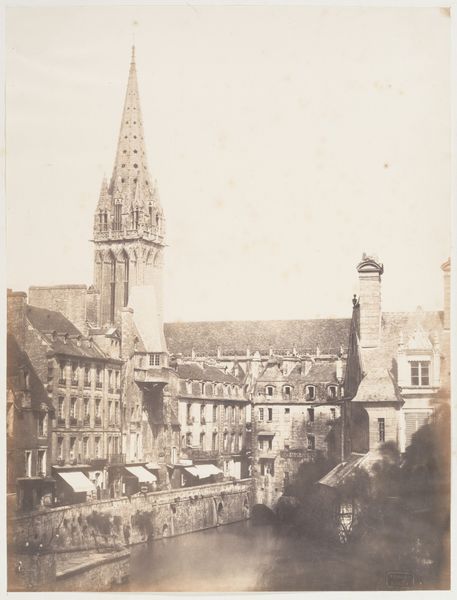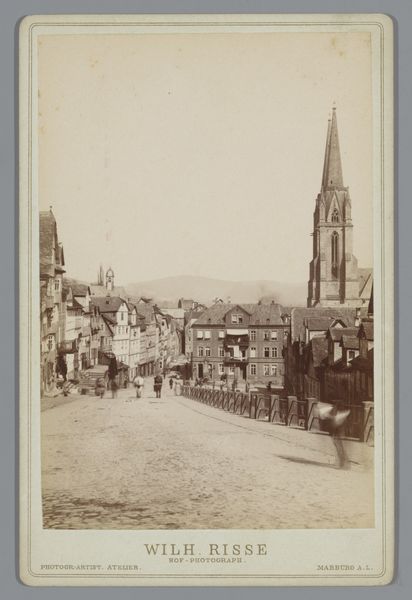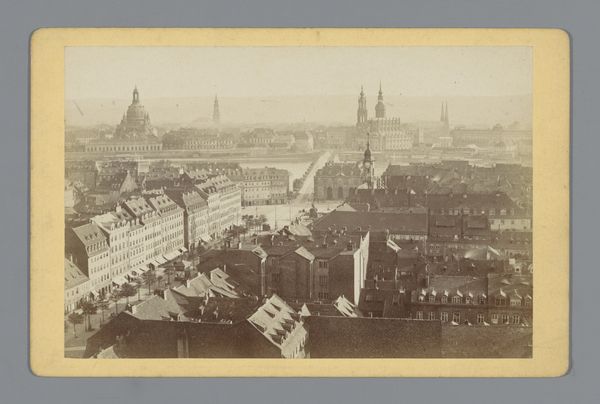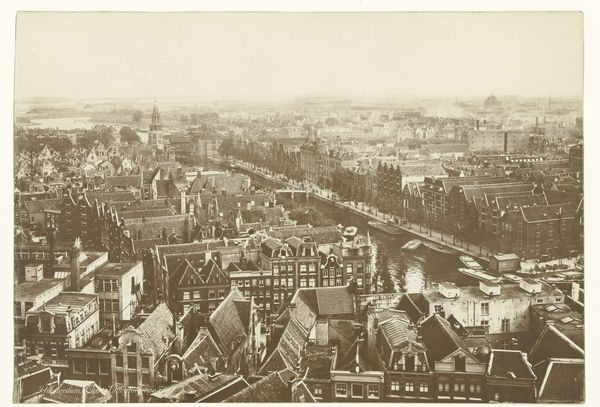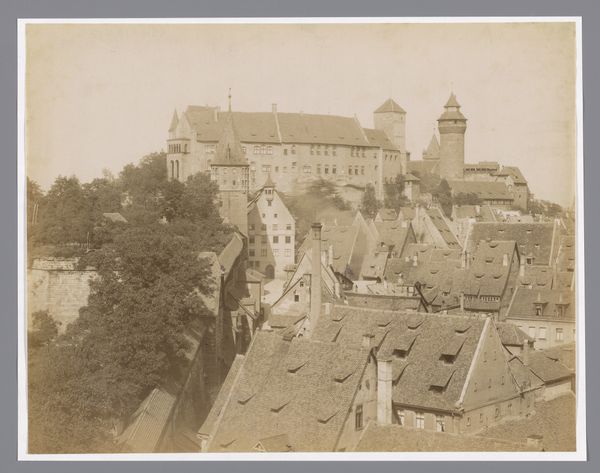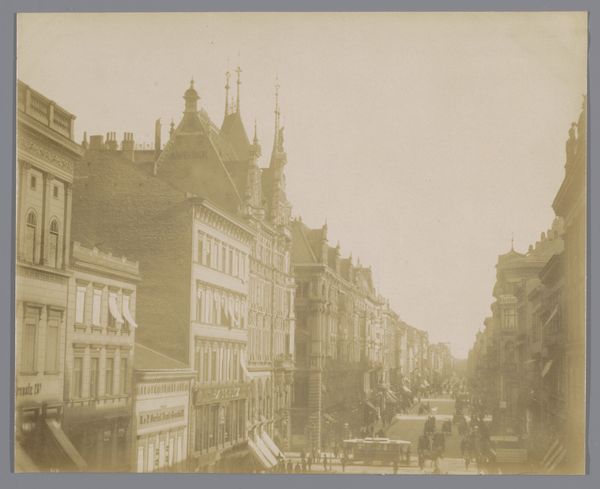
Dimensions: height 175 mm, width 385 mm
Copyright: Rijks Museum: Open Domain
Editor: This albumen print, "Panorama van Neurenberg," taken by F. Schmidt sometime between 1860 and 1875, presents a captivating cityscape. The high vantage point and the long, empty street in the center are striking. What layers of interpretation do you see in this work? Curator: Well, the panoramic view is itself a declaration. In the context of rapid urbanization and industrialization, panoramas offered a way to survey and perhaps even control the changing social landscape. This photo isn't just a representation of Nuremberg, it is also about power, privilege, and the gaze. Editor: Power? How so? Curator: Think about who commissioned and consumed these images. Usually, it was the rising middle class, eager to solidify their status. This panorama, with its organized space and clear lines of sight, reflects and reinforces their desire for order and control. Consider also who *isn't* seen. Where are the working classes, the marginalized communities? This isn't a neutral depiction; it’s a carefully constructed narrative. How might social class and gender inform one's reading of the work? Editor: I see what you mean. The focus on architecture, on established buildings, creates this sense of permanence, almost like erasing the stories of the people who lived and worked there. It's unsettling. Curator: Exactly. Photography at this time, like many art forms, wasn’t simply a reflection of reality, it was an active participant in shaping social perceptions and reinforcing existing power structures. Even the romanticized landscape style contributes by aestheticizing social inequalities and erasures. Editor: This photograph suddenly seems much more complex than I initially thought. It's a stark reminder to always question the narrative being presented to us. Curator: Indeed. By critically examining historical images like this, we gain insights into how power dynamics have shaped our understanding of the world. It's a vital step towards fostering a more equitable perspective on art history.
Comments
No comments
Be the first to comment and join the conversation on the ultimate creative platform.
